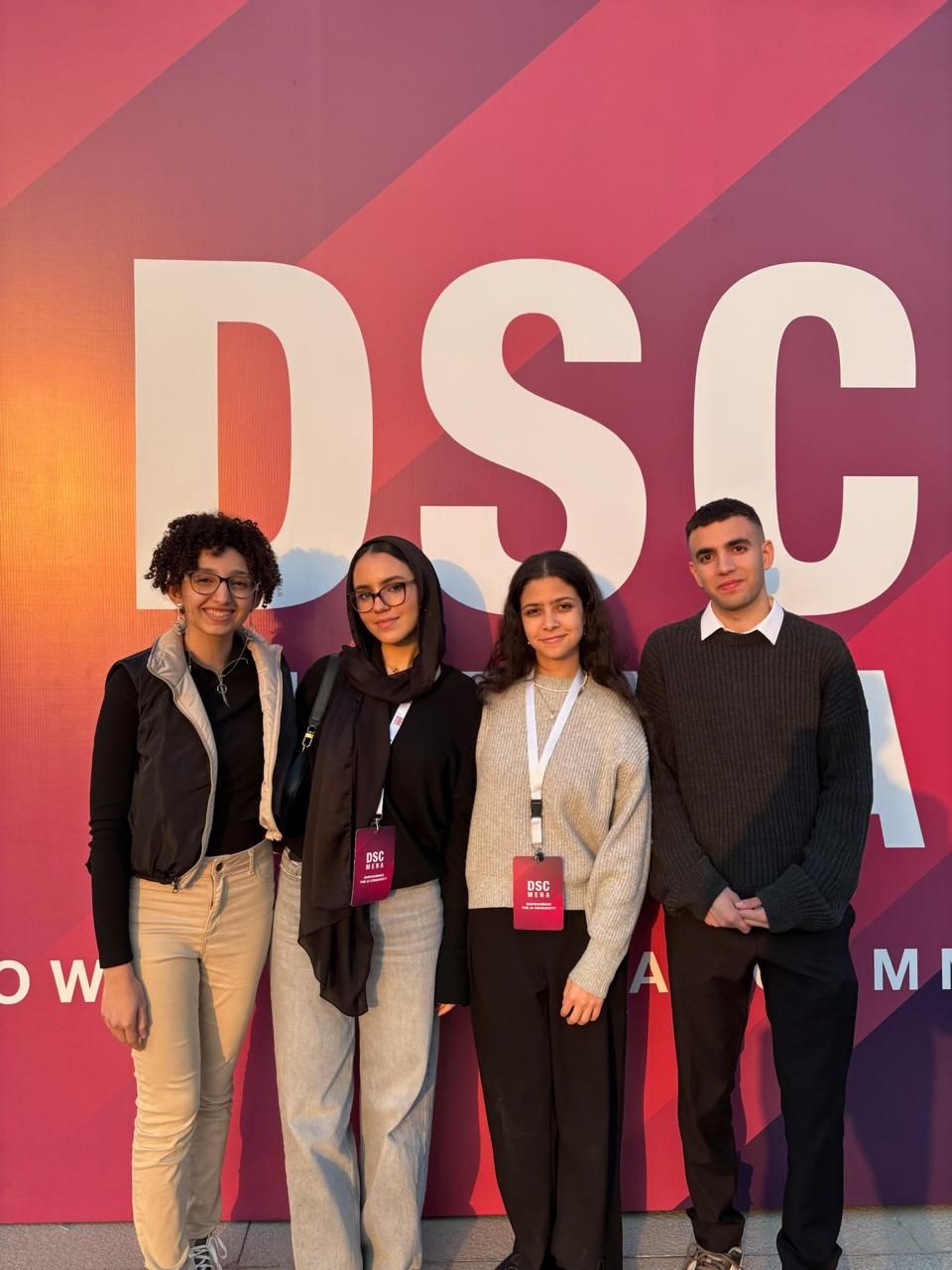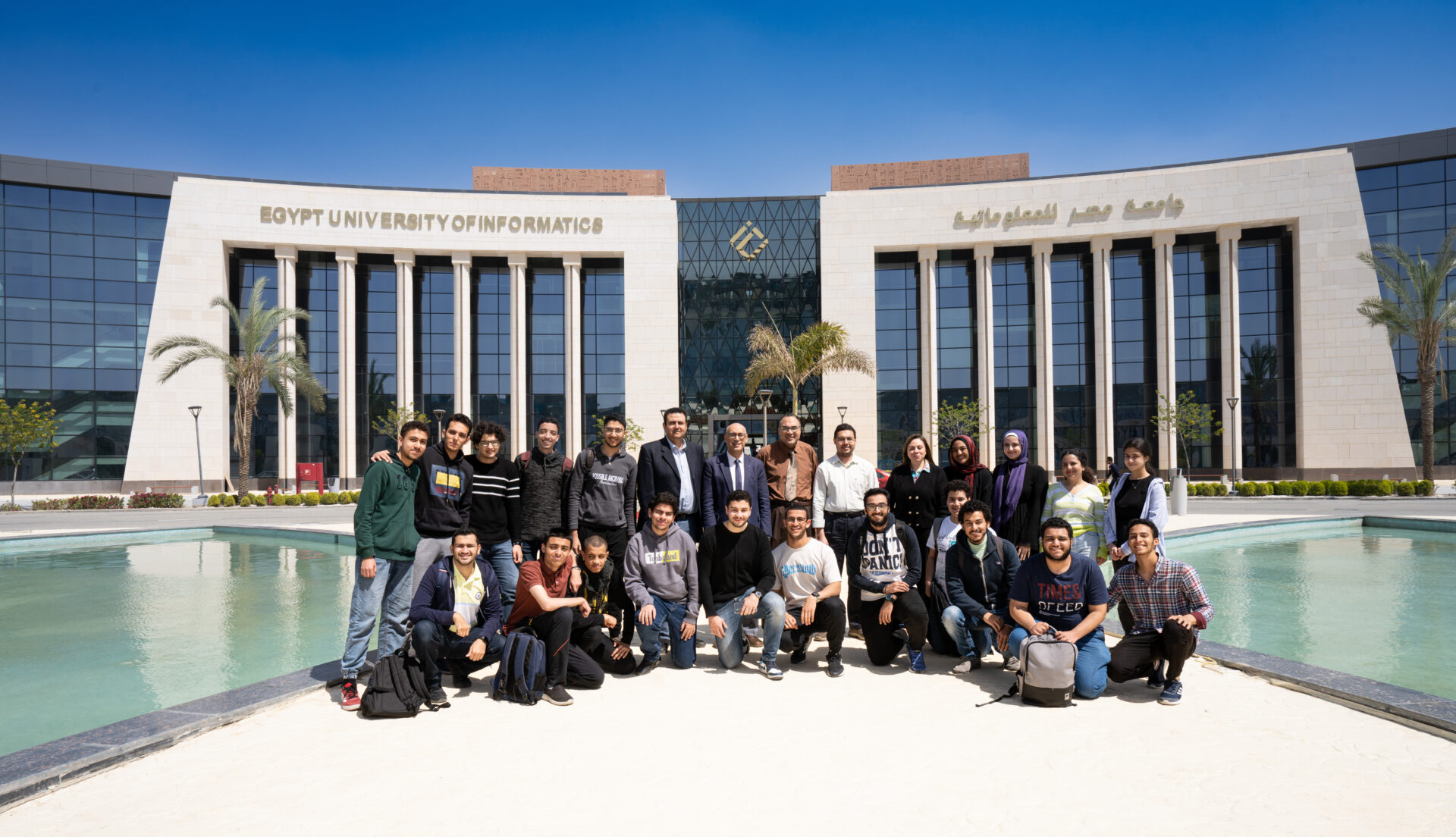
Sign Language Interpreter Project Shines at DSC MENA 2025

Nour Hany, Laila Khaled, Yasmine El Qorashy, and Ahmed Sameh—students from the Faculty of Computing and Information Sciences at Egypt University of Informatics (EUI)—proudly represented their university at DSC MENA 2025, where they presented their groundbreaking project, the Sign Language Interpreter. Selected as one of EUI’s top student innovations, the project exemplifies how technology can be used to promote accessibility and inclusion for the deaf and hard-of-hearing community.
The event provided the team with a unique opportunity to engage with a vibrant tech community that values purpose-driven innovation. Throughout the conference, they received thoughtful feedback, built meaningful professional connections, and gained valuable insights into the real-world applications of their work. Their journey reflects months of dedicated teamwork, supported by the Faculty of Computing and Information Sciences, whose guidance played a vital role in turning their idea into reality.
Speaking about the project, Nour Hany, a third-year student and a member of the research team, explained that the Sign Language Interpreter was developed using a two-phase approach. The first phase focuses on recognizing individual letters through computer vision techniques that detect hand signs for each character. The second phase involves recognizing full words by analyzing video clips to extract hand gestures and body movements, which are then modeled using artificial intelligence (AI) and temporal data processing techniques.
To build the letter recognition model, the team used a dataset of 2,268 images that were resized and normalized for optimal performance. By applying the Mediapipe framework and neural networks, they achieved an impressive accuracy rate of 93.33%. For word recognition, they compiled a dataset of over 15,000 videos—46 for each word—and experimented with various attention mechanisms. The most effective model, LSTM with Attention, achieved a 90% accuracy rate, outperforming all other models tested.
Looking ahead, the team is working to expand the program’s database to improve accuracy and functionality. A key goal in the next phase is to train the system to recognize Egyptian Sign Language, allowing it to support both Arabic and English translations. Since English Sign Language is widely used and internationally recognized, this also paves the way for future global applications. Additionally, the team envisions the tool being particularly valuable for assisting foreign tourists with hearing impairments during their visits to Egypt.
Fueled by the insights and encouragement gained at DSC MENA 2025, the team has returned more inspired than ever to continue creating technology that is not only innovative but also truly impactful.

